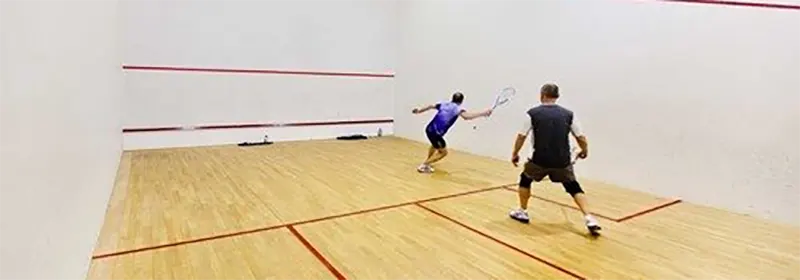22 August 2022 / 3-Min Read / Translate
I could probably visit any club in the world on any day of the week and find players doing boast and drive. It’s the most common pairs drill and probably has been for 50 years. It’s a great drill – if you do it properly. If I were to be standing on a balcony or behind the glass back wall and stop the players and ask each one, “what exactly are you aiming to do with the ball?“, what do you think they would say? What would you say?
Hitting every shot with intention, means EVERY SHOT. Not just in matches, not just when you are trying to kill the ball, but EVERY SINGLE SHOT! And of course that includes training and drills. If you don’t know exactly what you should be doing with each shot, find out. Ask somebody, watch and observe, read articles, anything to increase your knowledge.
So let’s use the boast and drive drill as an example. We will start with the boast.
The boast generally used in this drill, although you can use others, is the two-wall boast, also called the working boast or fading boast. It should be hit so that it is not easy to see a boast has been played, meaning your positioning should be the same as a drive. It should hit the front wall near the middle of the width and be about a racket’s head above the tin.

Its first bounce on the floor will be approximately half way between where it hit the front wall and the side wall. The second bounce will be as close to the nick as possible. let me repeat that last sentence: The second bounce will be as close to the nick as possible. This is the key objective to hitting a working boast is that second bounce. it causes doubt and hesitation.
The drive is mostly a straight drive, but, like the boast, there are variations that can be hit. For this mental exercise, let’s stay with the straight drive. The player is trying to hit a length that encourages the other player to let it hit the back wall. Any shorter and the player is forced to play it earlier, giving you less time. Any longer and the player has no decision to make. The length should be enough to allow them to wait, but also limit them by not coming off the back wall enough. Just like the boast, the right length is one that causes doubt in the player. In addition to the above, the driver also wants to hit the ball as close to the wall as possible.
BUT WAIT! they can’t, can they? Because the boaster is trying to make the second bounce in the nick, meaning that if the driver waits too long they won’t get a clean hit, so they have to decide: hit it early or hope it bounces off the side wall and allow them to make contact close to the wall. Phew! As you can see, the “simple” boast and drive is really more complex that it seems at first glance.
We haven’t even talked about movement yet! Ideally, the front player should come back to near the short line, but you can’t do boast and drive for long if they do that – it’s just too demanding. So, players just stand around, and sometimes that’s fine to work on control, but sometimes you. need to include the movement. If you do, they you have to switch every minute or so.
Spending time training instead of only playing will significantly improve you game, as long as you are training in the correct way. Don’t do any drill for too long, it’s better to put 100% intensity into it for shorter time periods, than only put some effort in and for longer. Be very clear what each player is trying to do with the ball.